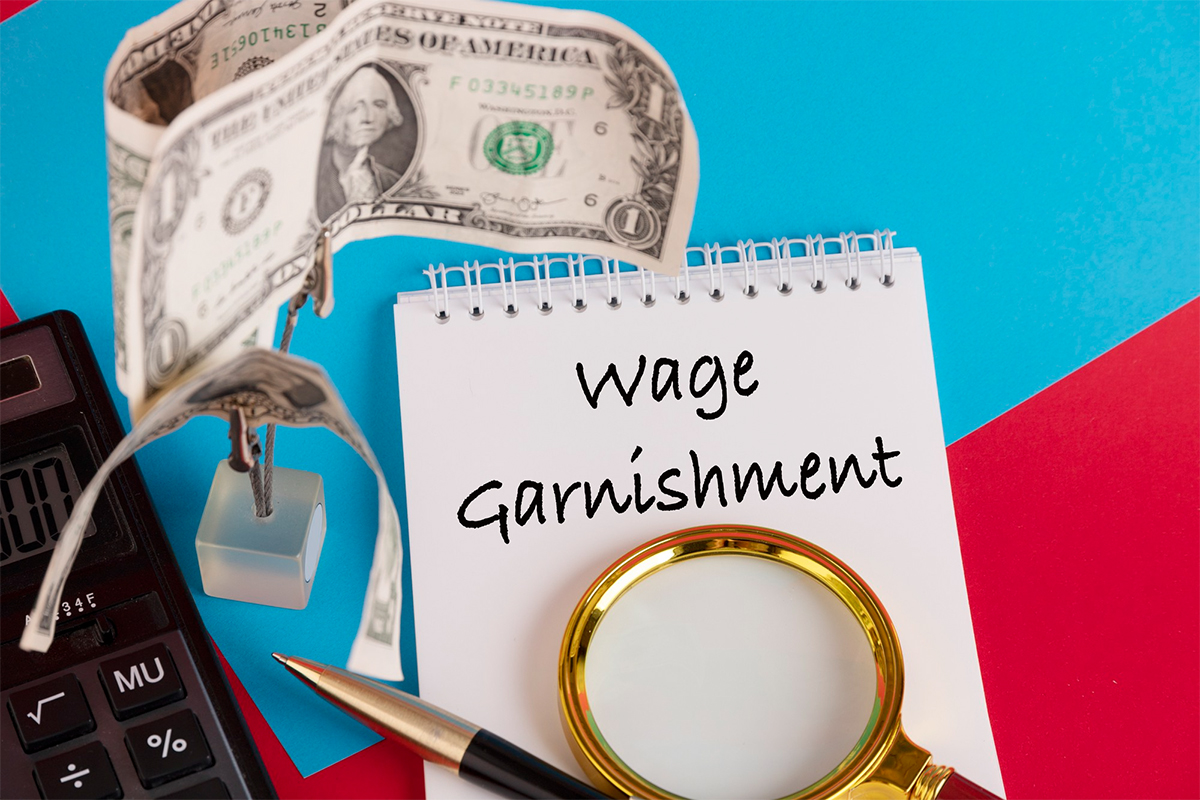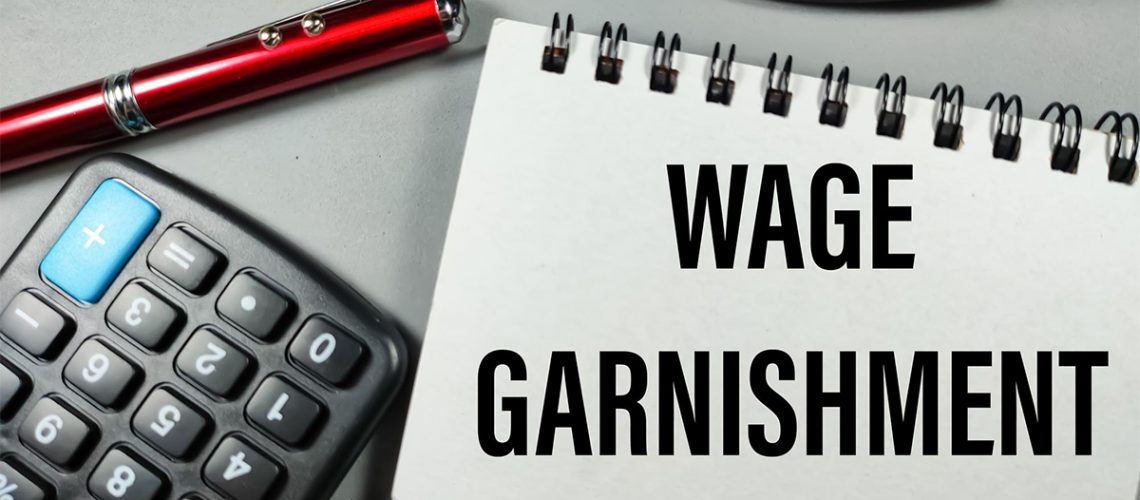Wage Garnishment
Wage garnishment is a legal process used by creditors to collect outstanding debts from individuals who have not fulfilled their financial obligations.
It involves the court ordering an employer to withhold a certain portion of the debtor’s wages, which will then be directly paid to the creditor.
The purpose of wage garnishment is to ensure that creditors are able to recover their money, typically in cases where other collection efforts have been unsuccessful. [1]
This process can be used to collect various types of debt, including:
- Credit card debt
- Personal loans
- Student loans
- Taxes
- Unpaid child support

Wage garnishment can have a significant impact on the financial situation of the debtor, as it reduces their disposable income and can lead to a downward spiral of financial difficulties.
Options for individuals facing wage garnishment include filing for bankruptcy, seeking legal assistance, or negotiating a repayment plan with the creditor.
By taking proactive measures, individuals can potentially stop or reduce the impact of wage garnishment.
Impact on Financial Situation
The reduction in income caused by wage garnishment can make it difficult for individuals to cover their basic expenses and bills. With less disposable income available, it can be challenging to maintain a balanced budget and meet financial obligations. This can lead to further financial strain and potential damage to their credit scores.
Having a garnishment on record can make it harder to access credit or secure loans in the future. Employers may also view an individual with wage garnishment as a risk, potentially affecting their job prospects.
Understanding Wage Garnishment Law
Wage garnishment is a legal process in which a portion of an individual’s wages is withheld by an employer to satisfy a debt owed to a creditor.
This process can be a significant source of financial stress and can have long-lasting effects on an individual’s financial stability. It is important for individuals to have a clear understanding of wage garnishment laws to know their rights and options.
Wage garnishment laws vary by jurisdiction, but they generally outline the maximum amount that can be garnished from an individual’s wages, as well as the types of debts that can be subject to garnishment.
These laws also provide guidelines on how much notice must be given to the debtor, how to claim exemptions, and what legal actions can be taken to challenge the garnishment.
One important aspect of wage garnishment law is the protection it provides for certain types of income. Federal law limits the amount that can be garnished from an individual’s wages for certain types of debts, such as child support and student loans.
There are provisions in place to protect individuals who are considered “head of household,” ensuring that they have enough income to cover basic living expenses.

Federal Minimum Wage Laws
Federal minimum wage laws play a significant role in the calculation of wage garnishments for consumer debt.
Currently, the federal minimum wage is set at $7.25 per hour, and this amount is used to determine the maximum percentage of disposable income that can be garnished.
When individuals owe consumer debts such as credit card debt or personal loans, the law allows creditors to garnish a portion of their wages to repay the debt. However, there are limits on how much can be garnished.
The Consumer Credit Protection Act (CCPA) sets a maximum garnishment limit based on an individual’s disposable income.
For federally guaranteed student loans, the maximum garnishment amount can be up to 15% of disposable income. However, this can increase to 25% for defaulted loans.
In the case of back taxes, the Internal Revenue Service (IRS) has the authority to garnish up to 15% of an individual’s disposable income.
State laws may provide additional protection for wage garnishments, either by lowering the maximum percentage or exempting certain types of income altogether.
Options to Stop Wage Garnishments
When faced with the threat of wage garnishment due to mounting consumer debt, individuals have several options at their disposal to stop this process and regain control over their finances.
By exploring negotiation and repayment plans, debt settlement, or filing bankruptcy, individuals can effectively address their debt and prevent wage garnishment from occurring or continuing.
Negotiation and Repayment Plans
One of the primary options for stopping wage garnishment is to negotiate with the collection agency and establish a repayment plan. This involves reaching an agreement with the agency on a structured payment arrangement that is feasible for both parties.
By showing a willingness to resolve the debt and making consistent payments, individuals can avoid the negative consequences of wage garnishment and regain financial stability.
Debt Settlement
Another viable option to halt wage garnishment is through debt settlement. This approach involves negotiating with the collection agency to settle the debt for a lower amount than what is originally owed.

Bankruptcy Filing to Stop Wage Garnishments
Bankruptcy filing can be a valuable tool for individuals seeking to stop legal action by creditors. When faced with overwhelming debt and constant collection efforts, bankruptcy offers a legal process to obtain relief and regain control over one’s financial situation.
When filing for bankruptcy, gathering the necessary financial documents is the first step. This includes producing records of:
- assets
- debts
- expenses
- income
Individuals are required to complete credit counseling courses when filing for bankruptcy. These courses aim to educate and inform debtors about alternatives to bankruptcy and provide them with the necessary tools to make informed financial decisions.
Once the pre-filing requirements are met, individuals can proceed to fill out bankruptcy petitions. These documents include detailed information about the debtor’s financial situation.
After the bankruptcy petitions are filed, individuals will receive a case number from the bankruptcy court. This case number acts as a reference throughout the bankruptcy process and is used to track the progress of the case.
To stop garnishment, individuals can request a copy of the earnings withholding order from the creditor and provide it to the bankruptcy court. This will halt the wage garnishment and prevent further legal action by creditors.
At the law office of Richard West, we have the experience to help you stop wage garnishment and provide legal guidance on a variety of other debt relief options. Contact us today to discuss your specific situation.
Sources:
[1] Wage Garnishment | Definition and How it Works | ADP. (2023, July 21). https://www.adp.com/resources/articles-and-insights/articles/a/all-you-need-to-know-about-wage-garnishments.aspx
[2] Fact Sheet #30: The Federal Wage Garnishment Law, Consumer Credit Protection Act’s Title III (CCPA). (n.d.). DOL. https://www.dol.gov/agencies/whd/fact-sheets/30-cppa



